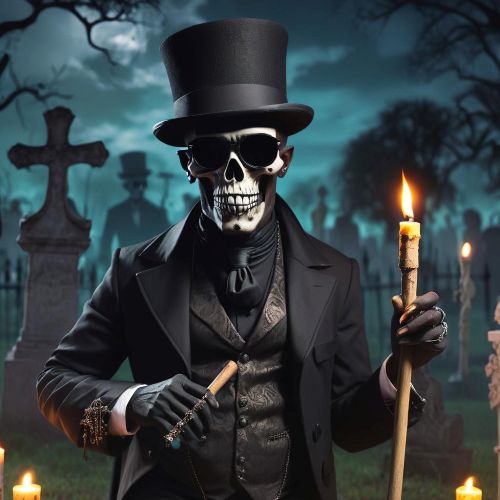Vodou Mythology
Vodou mythology is one of the most profound and misunderstood spiritual traditions of the Caribbean, rooted in the sacred fusion of West African cosmology, Catholic symbolism, and Indigenous Caribbean beliefs. Emerging primarily in Haiti during the colonial era, Vodou—often spelled Vodun or Voodoo—is not merely a religion but a complete worldview that connects the living, the spirits, and the divine. At its core lies a belief in a single supreme creator, known as Bondye, who is distant from human affairs, and a vast pantheon of spiritual intermediaries called lwa. These spirits govern different aspects of life such as love, health, family, and justice. Each lwa has its own rituals, symbols, and sacred rhythms that allow followers to establish personal relationships with them. Vodou mythology thus serves as a living bridge between the physical and spiritual worlds, expressing a deep understanding of balance, reciprocity, and community.
The lwa form the heart of Vodou mythology, each embodying a unique personality and purpose. Among the most well-known is Papa Legba, the guardian of crossroads, who opens the way between humans and the spirits. Baron Samedi, with his top hat and dark humor, governs death and resurrection, symbolizing the cycle of life and renewal. Ezili Freda and Ezili Dantor, two manifestations of the goddess of love, represent the dual nature of affection—tender and fierce, emotional and protective. These figures are not merely worshipped; they are honored through song, dance, and offerings that reflect the community’s respect for the sacred. Vodou mythology emphasizes that the divine resides within the rhythms of daily life. Every act of ritual, every beat of the drum, and every movement of dance becomes a dialogue with the invisible world, reaffirming the unity between spirit and matter.
Vodou mythology has often been misrepresented through colonial narratives and popular media, which portrayed it as dark or malevolent. In truth, Vodou is a faith of healing, protection, and ancestral remembrance. Its rituals are grounded in harmony and collective well-being, not in harm or fear. Temples, known as peristyles, are places of music, prayer, and offering, where the houngan (priests) and mambo (priestesses) lead ceremonies to honor the lwa. Central to these ceremonies are the veve—intricate symbols drawn on the ground to invite specific spirits. Drums, chants, and sacred dances align human energy with divine forces, creating a powerful sense of spiritual communion. Through myth, music, and movement, Vodou affirms life’s interconnectedness, turning suffering and survival into expressions of sacred resilience.
In modern times, Vodou mythology continues to shape Haitian identity and the wider Caribbean spiritual landscape. It influences art, literature, and music, with its symbols appearing in everything from murals and festivals to global pop culture. Beyond aesthetics, Vodou serves as a spiritual system that empowers individuals to connect with their roots and ancestors. It remains a vital part of community life, emphasizing mutual care and reverence for the unseen. The endurance of Vodou mythology is a testament to the Caribbean’s ability to preserve and transform ancestral wisdom under adversity. It embodies the region’s spirit of resistance, creativity, and faith, standing as both a cultural treasure and a living tradition that continues to guide and inspire new generations.


